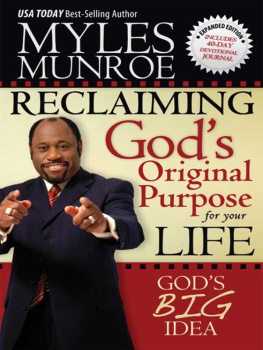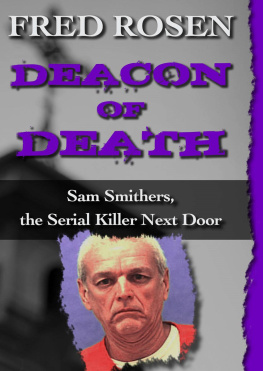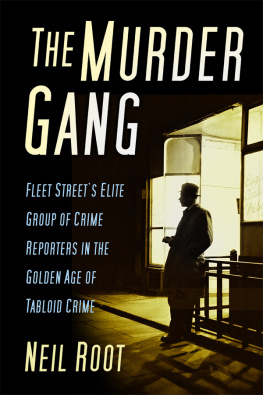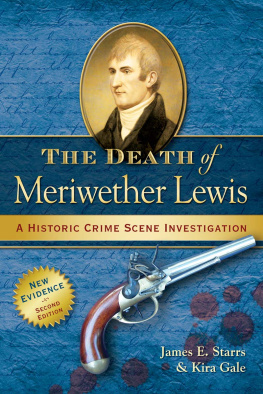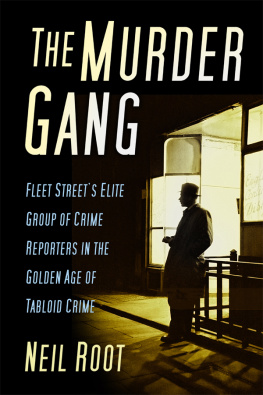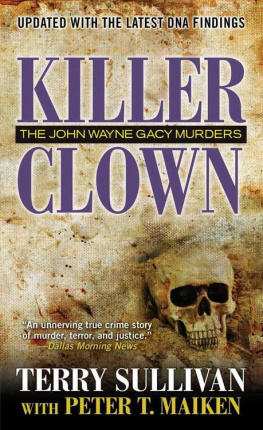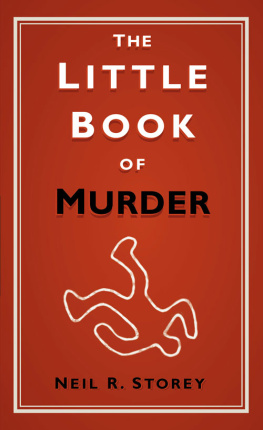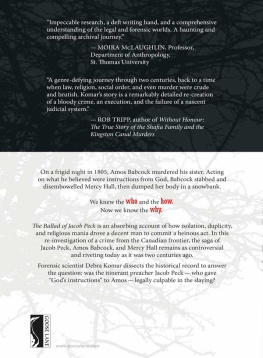ACKNOWLEDGEMENTS
To shamelessly crib Hillary Rodham Clinton, it takes a village to write a book like this. I am forever indebted to Joanna Alton Kerr, archivist, and Jane Anne Wilson and Julia Thompson, photograph archivists, at the Provincial Archives of New Brunswick, for their ceaseless efforts to find materials associated with this case. Thanks also to Alexandra McEwen and her fellow archivists at the National Library and Archive in Ottawa for their efforts. A tip of the hat to Barb at Fernhill Cemetery in Saint John for forwarding a slew of Munroe burial records. Dr. Leah Grandy, microforms assistant at the Harriet Irving Library at the University of New Brunswick, also provided a much-needed hand. As always, I am grateful to my literary agent, Carolyn Swayze, for her efforts in getting my books to market.
I also offer my sincere thanks to former New Mexico governor Bill Richardson, former chief medical examiner Dr. Ross Zumwalt, and the notorious outlaw Billy the Kid. This motley assemblage played a key role in the most ludicrous episode of my professional career: the 2004 criminal inquiry into the death of Billy the Kid. It was a silly and wasteful endeavour (and a true abuse of taxpayer dollars), but it was the genesis of where I am now. For that, I am eternally grateful.
Finally, I owe everything to the wonderful people at Goose Lane Editions Susanne Alexander, Martin Ainsley, Julie Scriver, Chris Tompkins, Colleen Kitts, Kathleen Peacock, Angela Williams, and all the staff for giving me a safe and supportive place to learn and grow as a writer. Thanks also to my editor, Sarah Brohman, who makes me crazy and a better writer in equal measure, and to Paula Sarson for her tireless efforts in proofreading.
ACT FOUR
In which the role of character refuses to die.
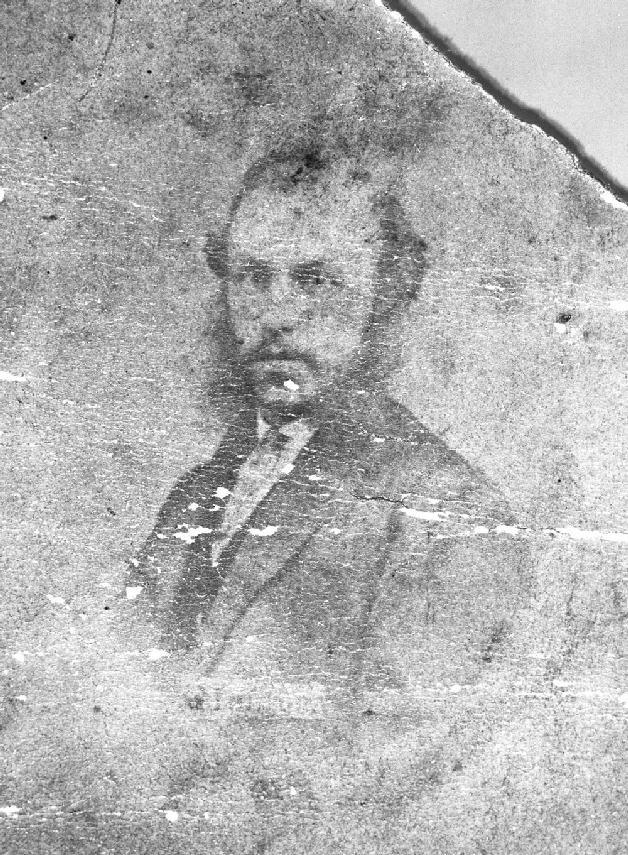
FIG 2. The architect John A. Munroe
ACT ONE
In which a decision is made, or circumstances conspire against an innocent man.
ACT THREE
In which the Crown ponders evidence of Munroes actions and intent, or the court debates his character.
ACT TWO
In which questions of character help to unmask a killer, or lead investigators on a wild goose chase.
Also by DEBRA KOMAR
The Bastard of Fort Stikine
The Lynching of Peter Wheeler
The Ballad of Jacob Peck

Author photo: Dan Froese
DEBRA KOMAR is the author of The Ballad of Jacob Peck , The Lynching of Peter Wheeler , and, most recently, The Bastard of Fort Stikine , which won the 2016 Canadian Authors Award for Canadian History. A Fellow of the American Academy of Forensic Sciences and a practicing forensic anthropologist for over twenty years, she investigated human-rights violations for the United Nations and Physicians for Human Rights. She has testified as an expert witness at The Hague and throughout North America and is the author of many scholarly articles and a textbook, Forensic Anthropology: Contemporary Theory and Practice .
CONTENTS
Copyright 2016 by Debra Komar.
All rights reserved. No part of this work may be reproduced or used in any form or by any means, electronic or mechanical, including photocopying, recording, or any retrieval system, without the prior written permission of the publisher or a licence from the Canadian Copyright Licensing Agency (Access Copyright). To contact Access Copyright, visit www.accesscopyright.ca or call 1-800-893-5777.
Edited by Sarah Brohman.
Cover and page design by Julie Scriver.
Cover image detailed from a work by Randall Roberts, www.etsy.com/market/rrobertsphoto.
Library and Archives Canada Cataloguing in Publication
Komar, Debra, 1965-, author
Black River Road : an unthinkable crime, an unlikely suspect, and the question of character / Debra Komar.
Includes bibliographical references and index.
Issued in print and electronic formats.
ISBN 978-0-86492-876-4 (paperback).--ISBN 978-0-86492-848-1 (epub).--ISBN 978-0-86492-804-7 (mobi)
1. Munroe, John A., -1870. 2. Munroe, John A., -1870--Trials, litigation, etc. 3. Vail, Sarah Margaret, 1845-1868. 4. Vail, Ella May, 1868-1868. 5. Murderers--New Brunswick--Saint John. 6. Murder--New Brunswick--Saint John. 7. Trials (Murder)--New Brunswick--Saint John. I. Title.
HV6535.C32N442016 364.152309715 C2016-902279-X
C2016-902280-3
We acknowledge the generous support of the Government of Canada, the Canada Council for the Arts, and the Government of New Brunswick.
Goose Lane Editions
500 Beaverbrook Court, Suite 330
Fredericton, New Brunswick
CANADA E3B 5X4
www.gooselane.com
To AC,
and other dodged bullets
EIGHT
Ashes and Dust
After assuming jurisdiction of the case, Christie to examine the remains.
The smell was the least of his problems, for the condition of the bodies left
Dr. LeBaron
The two men began their examination with the adult skull, as it was the only thing that was perfect; the other bones were in a great measure destroyed. After cleaning the cranium,
When he brought the fragment home, it fit perfectly into the wound. Despite repeated searches of the area, however, no bullet was recovered.
Back in

FIG. 4 The skull of the adult victim with the entrance wound visible to the left temple. The image was reproduced as a souvenir postcard, widely distibuted during the subsequent trial.
As for the juvenile remains, If experience had taught him anything, it was to recognize his own limitations.
To placate the publics growing Telegraph further postulated the victims must have been from the States, a feeble hypothesis grounded only in the style of the womans fashions.
Although the adults cause of death was readily apparent, both Christie and Botsford refused to offer any opinion as to how the child met its untimely end. The press, however, showed no such reticence. On September 20, 1869, the Telegraph stated the still-unnamed fiend had strangled the child to which he may have been bound by the nearest ties of blood! How the reporter reached such a conclusion was not stipulated. According to police, the relationship between the two victims was still unknown, much less their familial connection to the killer. The only purpose such unsubstantiated claims served was to fuel public outrage, putting unprecedented pressure on the coroner and police to solve this mystery.

On Thursday, September 16, 1869, Sylvester
Earle elected instead to bring the bones into court. The smell arrived well in advance of the actual remains, forcing jurors to cover their faces with handkerchiefs. The stench also may have contributed to the unusually poor attendance in the courtroom that day.
Earle then called each of the berry-pickers who discovered the bodies, beginning with Martha Thompson and her sisters, Caroline and Margaret. In the official inquest transcript, their testimony is headed by their names along with the disclaimer [colored], a label which simultaneously explained and dismissed the testimony that followed. The females collectively held to their version of events, claiming the men ordered them into silence. Diggs and Brandy then took the stand and contradicted their story. Repeated questioning regarding the missing locket and brooch elicited nothing but denials and obfuscation.
Next page

